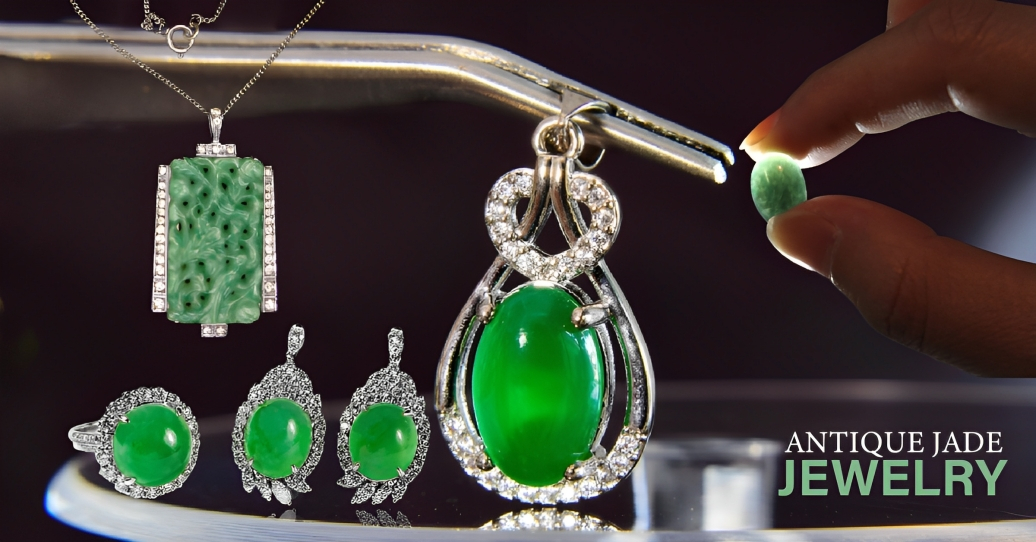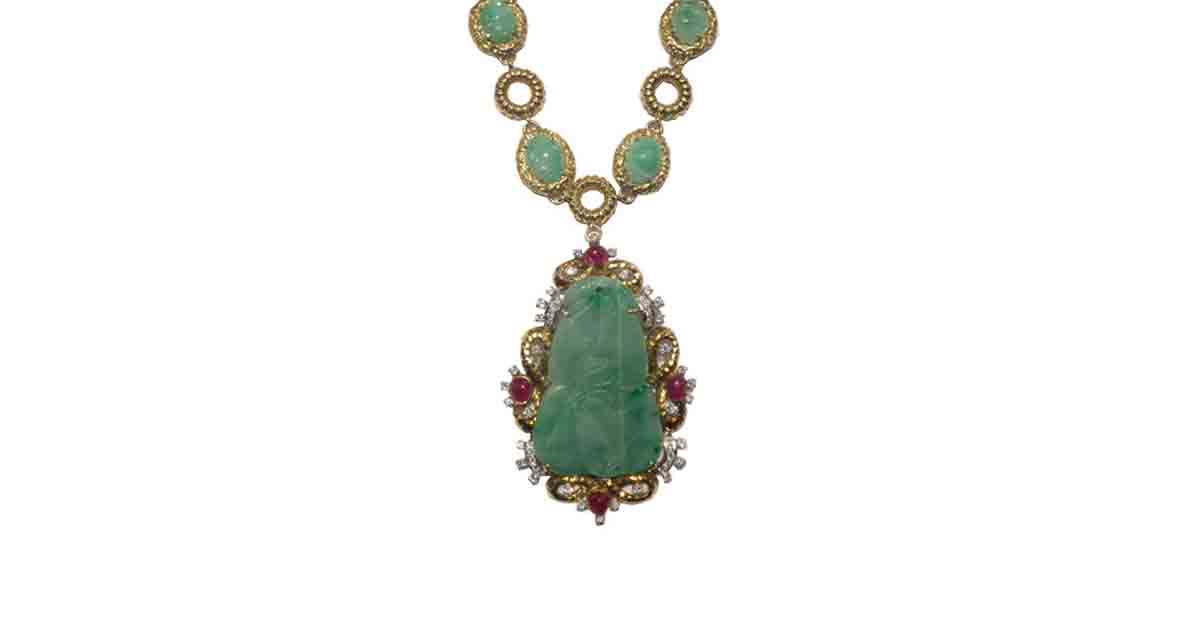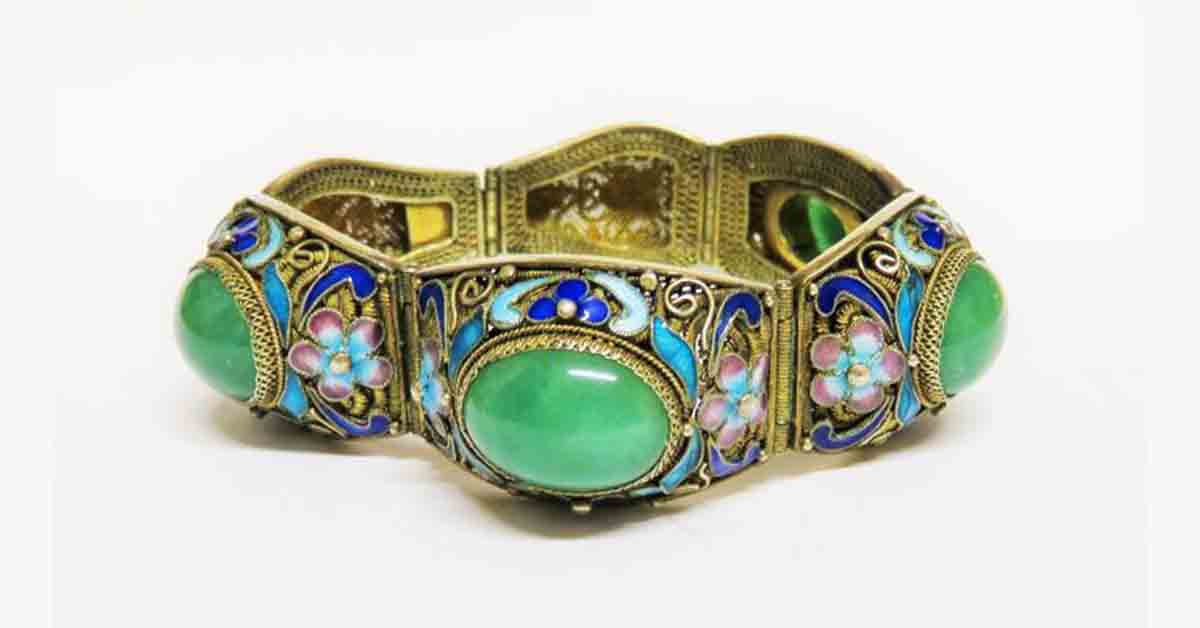Antique Jade: A Buyer’s Guide
Jade, the enigmatic gemstone that has captivated civilizations for millennia, continues to bewitch collectors and enthusiasts alike. Whether you’re a seasoned jade buyer or a curious newcomer, this guide will illuminate the fascinating world of antique jade, from its ancient origins to its modern-day allure.
What is Jade? More Than Meets the Eye
Contrary to popular belief, jade isn’t a single stone but a term encompassing two distinct minerals: nephrite and jadeite. These tough, ornamental stones have been prized for their beauty and durability since time immemorial.
Nephrite, a calcium magnesium iron silicate, is the OG of jade. It’s been the go-to material for tools, ornaments, and ceremonial objects in ancient cultures, particularly in China. On the other hand, jadeite, a sodium aluminum silicate, is the flashy newcomer, bursting onto the scene in the late 1700s and quickly becoming the darling of the jade world due to its vibrant colors and translucency.

How Old is Antique Jade? A Journey Through Time
When we talk about antique jade, we’re not just talking about your grandmother’s jewelry. We’re diving deep into the annals of human history. The earliest jade artifacts date back to the Neolithic period, circa 3500–2070 BCE. That’s right, while our ancestors were still figuring out agriculture, they were already carving jade.
In fact, jade production in China began over 7,000 years ago, around 5000 BCE. To put that in perspective, that’s before the invention of the wheel, writing, or even beer (gasp!). The evolution of jade carving is a testament to human ingenuity, spanning multiple Chinese dynasties and reflecting cultural and technological advancements over millennia.
The Crème de la Crème: Most Valuable Antique Jade Types
- Nephrite jade: The classic choice, often found in older artifacts from ancient China.
- Jadeite jade: The rare beauty, imported from Burma (Myanmar) and prized for its vivid colors.
- Imperial Jade: The crème de la crème, a translucent emerald-green jadeite that can fetch astronomical prices.
The most valuable antique jade pieces are those that combine exceptional craftsmanship, historical significance, and high-quality material. Pieces from renowned periods such as the Qing Dynasty or earlier Chinese dynasties are particularly sought after.

Spotting the Real Deal: How to Identify Antique Jade
- Material type: Distinguishing nephrite from jadeite requires gemological tests.
- Craftsmanship: Look for hand-carved details, signs of age, and traditional techniques like piercing and inlay.
- Patina and wear: Genuine antique jade typically has a natural surface patina from age and handling.
- Provenance and style: Consider the historical context and stylistic features consistent with known periods and cultures.
- Advanced testing: When in doubt, spectroscopy and refractive index tests can confirm authenticity.
Remember, if it looks too good to be true (or too cheap), it probably is. Authentic antique jade is rare and valuable, so be wary of suspiciously low-priced “antiques.”
Old vs. New: Antique vs. New Jade Value
While new jade can be valuable, especially high-quality jadeite, it generally can’t hold a candle to antique pieces in terms of market value. Antique jade commands higher prices due to its rarity, historical significance, and often superior craftsmanship.
The market values jade based on a combination of factors:
- Age
- Quality of the stone
- Rarity
- Artistic merit
So while that modern jade bangle might be beautiful, it’s unlikely to appreciate in value like a genuine antique piece.
The Building Blocks: What is Jade Made Of?
At its core, jade is a testament to the beauty of geology. Let’s break it down:
- Nephrite: A fibrous, microcrystalline variety of the amphibole mineral actinolite-tremolite.
- Jadeite: A pyroxene mineral composed of sodium and aluminum silicate.
Both types are incredibly tough, which is why our ancestors found them so useful for tools and ornaments. This toughness is also why jade artifacts have survived for thousands of years, allowing us to admire and study them today.
More Than Just a Pretty Stone: Jade Symbolism
In many cultures, particularly Chinese, jade is more than just a gemstone—it’s a symbol laden with meaning. Here’s a quick rundown of jade symbolism:
- Purity and clarity of mind
- Virtues: benevolence, wisdom, courage, and justice
- Happiness: Often represented by a bat motif
- Long life: Symbolized by butterflies
- Power and prosperity: Represented by dragons
- Immortality: Depicted through peach motifs
- Heaven: Symbolized by the Bi disk
Jade has been called the “royal gem” in China, associated with status, health, and spirituality. It’s not just a stone; it’s a cultural touchstone.

The Many Faces of Jade: Types of Jade
While we’ve mainly discussed nephrite and jadeite, it’s worth noting that jade comes in various forms and colors. Here’s a quick comparison:
| Type | Composition | Characteristics | Historical Use |
|---|---|---|---|
| Nephrite | Calcium magnesium iron silicate | Usually creamy white to greenish, tough and dense | Used extensively in ancient China for tools, ritual objects, and jewelry |
| Jadeite | Sodium aluminum silicate | More vibrant colors (green, lavender, white), rarer and more valuable | Became prominent in China from late 1700s, prized for jewelry and carvings |

Wrapping Up: The Enduring Allure of Antique Jade
From Neolithic tools to imperial treasures, jade has been a constant companion in human history. For jade buyers and antique enthusiasts, understanding the depth and breadth of this remarkable stone opens up a world of beauty, history, and investment potential.
Whether you’re looking to start a collection, find that perfect piece, or simply appreciate the artistry of ancient craftsmen, antique jade offers a tangible connection to our past. So the next time you encounter a piece of jade, take a moment to consider its journey—it might just be older than civilization itself.




